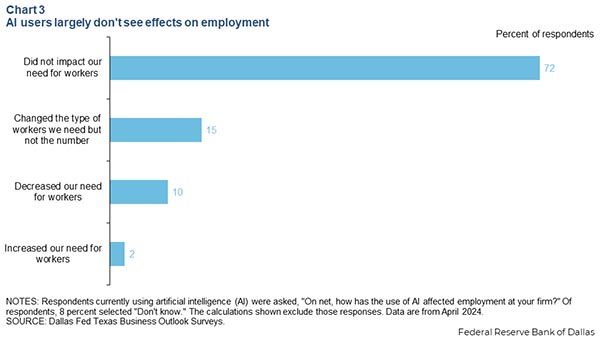
United by Type
Via Print magazine, a new exhibition from the United Arab Emirates seeks to unite different cultures and nations via typography. Conceived by Nada Abdallah, an assistant professor at the University of Sharjah’s College of Fine Arts and Design in the UAE, FiftyFifty is a traveling typographic exhibition that seeks to use typography and calligraphy to unite student work across different cultures and languages.
FiftyFifty put out a global call for typographic artworks of one word in their language that encapsulated the theme of “Positive Synonyms.” An incredible 1,500 student submissions from 34 universities in 32 countries (in 20 languages) were juried by nine industry judges who selected 150. The resulting collection of hand-drawn and digital calligraphy, typography, and lettering designs is now a traveling exhibition featuring 50x50cm black-and-white posters.

Left: “Qima” (Arabic, meaning “Top”) by Zena Khanfar, Palestinian, University of Sharjah; Right: “Kutumb” (Gujarati, meaning “Family”) by Krishna Tandel, Indian, University of Petroleum and Energy Studies.
The exhibition has been endorsed by the Association Typographique Internationale (ATypI), a worldwide organization dedicated to type and typography design.
FiftyFifty will travel to the Ionion Center for the Arts and Culture in Kefalonia, Greece, on July 27, and then will open at the College of Fine Arts and Design at the University of Sharjah in September. You can see all the selected works on FiftyFifty’s Instagram feed.
Or in this video:
No Boos for Boox
Looking for a good ereader? The Verge is pretty keen on the new Boox Palma.
There are really only three things you need to know about the Boox Palma. One: it’s about the size of a smartphone. Two: it runs Android, with the Play Store. Three: it has an E Ink screen. There are other specs and features I’ll get to, but that combination — smartphone, Android, E Ink — is the Palma’s whole reason for existence.

It goes for $280, and as we all know E Ink is not a great display technology for video, and the reviewer admits that even though it can download any Android app, it’s not always a pleasant experience. But for a pocket-sized E Ink-based ereader with the long battery charge life of E Ink, it may be all you need while traveling.
Postal Jeopardy
Via Boing Boing, it was recently announced on Jeopardy! that the late host Alex Trebek is going to be honored with a postage stamp.

It is entirely fitting that the image on the stamp is of a Jeopardy clue and not Alex himself, as he always insisted that the contestants were the star of the show, not him.
AI-Yi-Yi, Part the Infinity: Are We Losing Our Jobs?
One of the big concerns about so-called AI is that it is has the potential to replace some people’s jobs. But what’s the story so far? Last week, the Dallas Fed conducts quarterly Texas Business Outlook Surveys (TBOS) which this quarter focused on AI. The upshot:
Of the 363 responding Texas business executives, nearly 40 percent use AI at their firms, and 16 percent are planning to use it in the next 12 months. Among firms using AI, about half say they use generative AI, which autonomously generates new content, unlike traditional AI, which relies on explicit programming to execute tasks.
By the way, in 2018 they had asked AI , and “only 5 percent of firms reported adopting AI, with another 8 percent in the process of introducing it.” We’re surprised it was that much as long ago as 2018, as it wasn’t until 2022 that anyone had ever really heard about Aim unless you were really following tech.
But the operative question was, is AI replacing jobs? They say it’s been minimal, but 10% seems like a lot:

They add:
A financial services firm noted, “AI is helpful in offloading workload and increasing productivity, but we are not at the point where AI is going to replace workers.”
Yet.
these firms were largely using AI for customer service and process automation. A manufacturer noted, “There is strong potential for AI to automate or eliminate many clerical jobs in our business that will save our team time and money.” Workforce reductions from AI use are notably more common among large firms than small ones.
Remember, though, this is just Texas. In other places, your milage may vary. Furthermore:
Among the modest share of firms reporting an employment impact from AI, decreased employment is most common for low-skill positions (Chart 4). This finding highlights the need for these workers to adapt and acquire new skills more pertinent to a data-driven economy.
’Twas ever thus.
About that Energy Usage
Recently, the latest buzz about so-called AI is that its voracious demand for power (i.e., just electric power, at least for now) will lead us to an energy apocalypse. Stories in Bloomberg and the WaPo, drawing on projections from Goldman Sachs and the International Energy Agency (IEA), highlighted AI's “insatiable” demand for energy, the potential impact on the power grid (i.e., not good), and on our attempt to wean ourselves off of fossil fuels someday (also not good). Will the electrical well run dry?
Ars Technica takes a step back and takes a sober look at the so-called energy apocalypse and points out that these fears are perhaps a bit overblown.
Digging into the best available numbers and projections available, though, it's hard to see AI's current and near-future environmental impact in such a dire light. While generative AI models and tools can and will use a significant amount of energy, we shouldn't conflate AI energy usage with the larger and largely pre-existing energy usage of "data centers" as a whole. And just like any technology, whether that AI energy use is worthwhile depends largely on your wider opinion of the value of generative AI in the first place.
Yeah, well…
While the headline focus of both Bloomberg and The Washington Post's recent pieces is on artificial intelligence, the actual numbers and projections cited in both pieces overwhelmingly focus on the energy used by Internet "data centers" as a whole. Long before generative AI became the current Silicon Valley buzzword, those data centers were already growing immensely in size and energy usage, powering everything from Amazon Web Services servers to online gaming services, Zoom video calls, and cloud storage and retrieval for billions of documents and photos, to name just a few of the more common uses.
One Bloomberg source, asked “why data centers were suddenly sucking up so much power”: “It’s AI...It’s 10 to 15 times the amount of electricity.”
But then this is the chart they used to illustrate this (TWh stands for “terawatt hours):

Ars Technica helpfully added the red line at 2022, the year of the debuts of Dall-E and ChatGPT which triggered the overwhelming interest in generative AI. Looks like data centers’ energy consumption was well on its way to being voracious long before so-called AI. Interestingly, there is actually a small slowdown in energy use after 2022.
So the question then is: what percentage of data center energy use does AI account for? That’s not an easy thing to grok.
Dutch researcher Alex de Vries found a clever way to get an estimate. In his study “The growing energy footprint of artificial intelligence,” de Vries starts with estimates that Nvidia's specialized chips are responsible for about 95 percent of the market for generative AI calculations. He then uses Nvidia's projected production of 1.5 million AI servers in 2027—and the projected power usage for those servers—to estimate that the AI sector as a whole could use up anywhere from 85 to 134 TWh of power in just a few years.
Now, of course that’s a lot of power, but, looked at in context, it’s not all that outlandish.
measured against other common worldwide uses of electricity, it’s not representative of a mind-boggling energy hog. A 2018 study estimated that PC gaming as a whole accounted for 75 TWh of electricity use per year, to pick just one common human activity that's on the same general energy scale.
If you think using that much energy is a bad thing, that’s fair, but as we do more and more things online—and as technologies like faster broadband speeds make it possible to stream more video, play more games, have more Zoom calls (oy)— and, yes, use more AI tools—data centers will use more energy. (And let’s also not forget more mundane, non-digital things like refrigerators and air conditioners, which are increasingly more necessary in a warming world, but which are also pretty big energy hogs.)
But back to AI…the Ars Technica piece points out that, in a lot of ways it’s still an unproven technology that a lot of people are throwing money at right now. Will that continue? How long can AI see exponential growth? That’s impossible to say at the moment, but at some point, there will come an economic reckoning: will it pay enough in dividends (whatever those end up being) to justify all the money being thrown at it—and the energy it is using?
In the long run, AI’s energy use will likely level off at a significant but not grid-melting level that's roughly commensurate with the collective economic value we as a society get from it. Whether the trade-offs inherent in that shift are "worth it" involves a lot of value judgements that go well beyond how much electricity a bunch of servers are using.
RCA: Not Victor
We’re always curious, and sometimes a bit sad, when a company that was one of the most innovative and successful in the world falls from grace and eventually goes out of business. Case in point: RCA. This is the company that invented radio (basically). That invented the first color TV. But by the mid-1980s it was a has-been, once dominating consumer electronics but eventually sold to GE. Popular Science takes a look back and points to one particular product that sealed RCA’s fate: Selectavision. Launched in 1977, Selectavision was an early home video format that was basically a “video phonograph record.” It promised “interactive educational and entertainment experiences”—back before anyone knew what that meant. RCA sank $580 million into Selectavision (1970s dollars) and it returned the favor and sank RCA. Popular Science host Kevin Lieber takes a deep, entertaining dive into the Selectavision debacle, as well as the dawn of home video.
St. Screen
Whilst catching up on the “T Series” of the venerable quiz program QI, we came across an interesting fact: there is a patron saint of televisions and other display screens. We naturally had to look this up and, yes, via the University of Portland, St. Clare of Assisi is indeed the patron saint of televisions and computer screens.
An early follower of St. Francis, Clare founded The Order of Poor Ladies, which eventually became known as the Poor Clares. Late in her life, she fell too ill to attend church, and one day the images and sounds of the entire Mass appeared in full on the wall of her room. This story would have been well-known to Italian native Pope Pius XII, who in 1957 named her the patroness of this new invention—television—that, in his words, “is a wonderful instrument… which can be the source of very great wealth, but also of deep troubles.”
He’s lucky he missed the smartphone era. But then “St. Clare is also the patron saint of sore eyes.” There’s a patron saint of sore eyes? So her shrine would be a holy site for sore eyes?
Nor Any Drop to Drink
Here’s what sounds like a dystopian nightmare, although it may be overblown: an airport where the only way to get water is to download an app and watch ads. Says Boing Boing (via the Cool Down):
travelers are now subjected to a Sodastream-branded water fountain that dispenses a measly 8 ounces of water, only to then force them to watch a video ad and an app download prompt. “So each person is there waiting for that bull**** to finish while this machine has replaced the public fountain,” one frustrated traveler noted on Reddit.
This was at Philadelphia International Airport. The Cool Down adds:
A spokesperson for the Philadelphia International Airport told The Cool Down that the station does feature an option to dispense plain water for free with no ads to begin pouring and that the airport does still have several regular water refilling stations.
…In a follow-up, the spokesperson said that “the user does not need to watch an ad to pour more than 8 ounces of water,” adding: “I watched a passenger fill an empty 16 ounce plastic bottle yesterday, right before I filled my own 20 ounce bottle. Both were filled without interruption. I used both machines to just to make sure this was the case. ... The bottle needs to remain on the sensor below the spout for the water to be dispensed. If it is lifted, the machine could have been interrupted mid-pour.”
For now.
“Wait until they realize that they can play ads at urinals and in toilet stalls,” one person said grimly. (Spoiler alert: They already have, but at least they haven't yet found a way to force you to remain there for a full minute.)
Of course, if you can’t get water, you avoid the latter problem…
See EMILY Play
Here’s a term we never thought we’d hear: robot lifeguard. Says Core 77:
This EMILY Rescue Robot is incredible. It’s a battery-powered, remote-controlled lifeguard that can zip out to victims at 23 MPH, far faster than a lifeguard could get there.

It’s got straps and ropes to hang onto, and can either be used to tow the victim back to shore, or give them something to hang onto until a rescue swimmer arrives.
The units run $12,000 and are sold all over the world. The battery runtime is 14 minutes, and during a rescue at Rockaway Beach in Oregon, an EMILY unit was able to make two trips (100 yards out and back, twice) to save two adults and two children from drowning.
Still, Baywatch wouldn’t be the same…
Peter Be Not Proud
Do you remember things that never happened to you? If so, what drugs are you taking? But then again, maybe your past lives are catching up with you. This from a genuinely weird article in the Daily Mail: “The children who remember their past lives: Chilling phenomenon of why thousands of toddlers are being haunted by memories that aren’t theirs.” Say what?
‘That is the field where I died’, a five-year-old boy tells his parents.
‘I remember because the mud was so deep it went over my gaiters’, he says serenely while pointing across a former historic battlefield in southern England.
Quite apart from the shock of their son claiming to have been reincarnated, his parents listened opened mouthed because he had no knowledge of history yet had referred to his gaiters - a protective leg covering worn by soldiers from 1700 until the end of the First World War.
And apparently there are many others.
An American university has compiled a database of more than 2,200 children who have been haunted by ‘carry-over of memories’ of past lives since the 1960s.
The first thing that occurs to someone who is not Fox Mulder is that they probably got it from TV, the Internet, friends or family, or just their imagination, which is usually pretty vivid among children.
But two thirds of those cases contained enough detail to identify the deceased person the child believes they may have been, a recent study by the University of Virginia School of Medicine found.
Hmm…
Spooky talk from youngsters aged between two and six who claim to have lived and died before should not be written off as nonsense, hypnotist and past lives expert Tony Rae has warned.
There are a couple of job titles you don’t see very often.
Rae, who was Chairman of The British Council of Professional Hypnotists for 25 years
Or at least that’s what he’s come to believe...
was reacting to a study in the US which has documented over 2,200 cases where children have inexplicably given detailed accounts of events they could not possibly have known about.
Children pick up stuff from anywhere and everywhere, so we’re not sure reincarnation is the most obvious explanation. Still, it would be nice…
Pillars of Creation
Some months ago, we linked to a NASA visualization of a trip into a black hole. Now, NASA is back with a new visualization that takes you on a trip through the Pillars of Creation, the iconic clouds of dust and ionized gas made famous by the Hubble Space telescope.
The four Pillars of Creation, made primarily of cool molecular hydrogen and dust, are being eroded by the fierce winds and punishing ultraviolet light of nearby hot, young stars. Finger-like structures larger than the solar system protrude from the tops of the pillars. Within these fingers can be embedded, embryonic stars. The tallest pillar stretches across three light-years, three-quarters of the distance between our Sun and the next nearest star.
The video is based on observational data from both the Hubble and James Webb Space Telescope.
Saucy
Most of who need caffeination in the morning would like nothing more than to wake up to a big, rack of barbecued ribs. But, alas, coffee, tea, or soda is just a more convenient caffeine delivery system. Until now. Says Food & Wine:
This summer, 5-Hour Energy has a new product to help take your backyard barbeque up a notch, but what it’s offering might be different from what you expect. Just in time for the year’s biggest day of grilling, July 4th, the brand is debuting its own energizing barbeque sauce, created in partnership with The National Food Lab, which debuts on June 27. (Yes, a barbeque sauce, and yes, it’s caffeinated.)
It is peach-mango-flavored (that is, the same as 5-Hour Energy), each serving contains 60 milligrams of caffeine (equivalent to one cup of coffee), and, at least according to one BBQ expert (Brian Baumgartner), it’s pretty good.
“I’m typically not even a fruit-forward person, but the tanginess and slight sweetness that the peach and mango gave was really delicious,” he says. “Thankfully, it turns out it’s really good.”
He says it would be good on slow-cooked meat like the pulled pork he used it on, but it would also be good on ribs and other meats or even drizzled on grilled asparagus. “Truly whatever you put barbeque sauce on,” Baumgartner says.
Corn Flakes. Is that weird?
Anyway, if you want to keep from falling asleep at your July 4th BBQ, you ca pick up the sauce on 5-Hour Energy’s website.
This Week in Printing, Publishing, and Media History
June 24
1842: American short story writer, essayist, and journalist Ambrose Bierce born.
1930: American businessman, founder of Ziff Davis William Bernard Ziff Jr. born.
1947: Kenneth Arnold makes the first widely reported UFO sighting near Mount Rainier, Wash.
1949: The first television western, Hopalong Cassidy, is aired on NBC starring William Boyd.
1957: In Roth v. United States, the U.S. Supreme Court rules that obscenity is not protected by the First Amendment.
June 25
1848: A photograph of France’s June Days uprising, “Barricades on rue Saint-Maur,” becomes the first photograph used to accompany a newspaper story, launching the practice of photojournalism.
2018-06-29-AtW-photojournalism.jpg
1903: British novelist, essayist, and critic George Orwell born.
June 26
1927: The Cyclone roller coaster opens on Coney Island.
1929: American illustrator and graphic designer Milton Glaser born.
1948: Shirley Jackson’s short story The Lottery is published in The New Yorker magazine.
1974: The Universal Product Code is scanned for the first time to sell a package of Wrigley's chewing gum at the Marsh Supermarket in Troy, Ohio.
1997: Oh, FFS: the U.S. Supreme Court rules that the Communications Decency Act violates the First Amendment to the United States Constitution.
June 27
1880: American author, academic, and activist Helen Keller born.
1895: The inaugural run of the Baltimore and Ohio Railroad’s Royal Blue from Washington, D.C., to New York City, the first U.S. passenger train to use electric locomotives.
1898: The first solo circumnavigation of the globe is completed by Joshua Slocum from Briar Island, Nova Scotia.
June 28
1846: Adolphe Sax patents the saxophone.
1926: American actor, director, producer, and screenwriter Mel Brooks born.
1975: American screenwriter and producer Rod Serling dies (b. 1924).
2018: American writer Harlan Ellison dies (b. 1934).
June 29
1613: London’s Globe Theatre, constructed by William Shakespeare’s playing company, burns down. A second Globe was built by 1614, so all’s well that ends well.
1900: French poet, pilot, and author of The Little Prince, Antoine de Saint-Exupéry, born.
1920: American animator and producer Ray Harryhausen born.
1975: Steve Wozniak tests his first prototype of the Apple I computer.
2007: Apple Inc. releases the iPhone.
June 30
1685: English poet and playwright John Gay born.
1937: The world’s first emergency telephone number, 999, is introduced in London.















Discussion
Only verified members can comment.